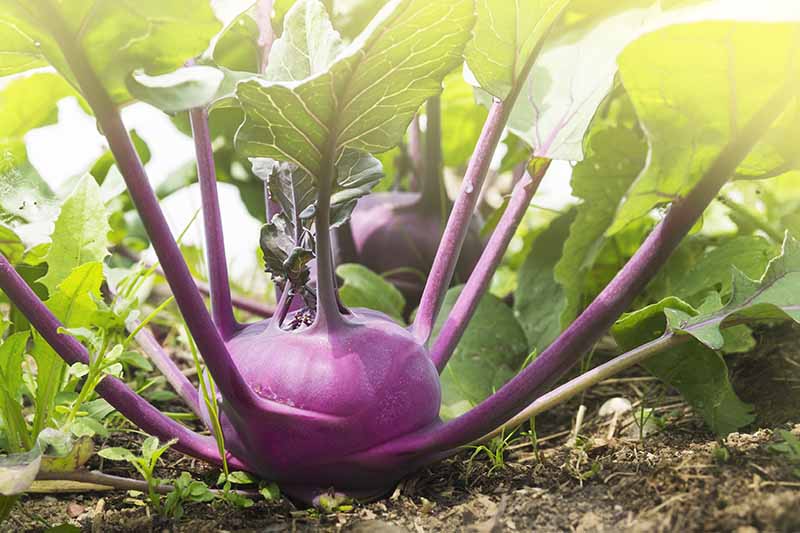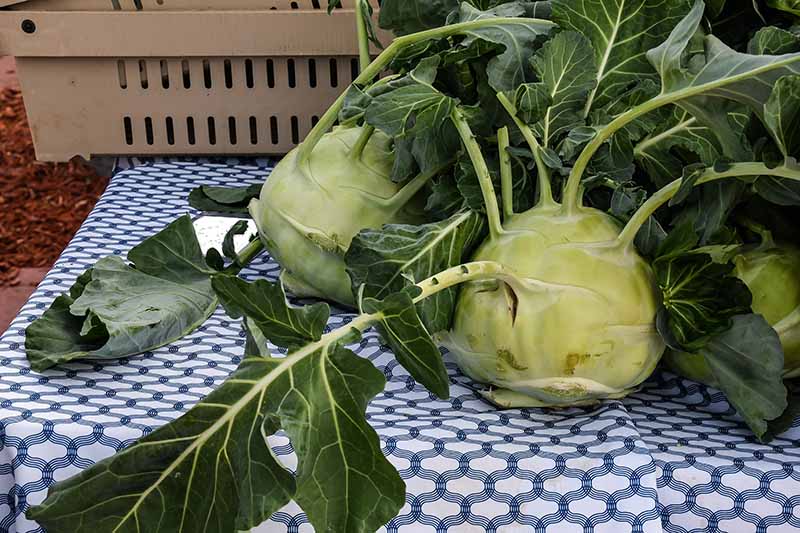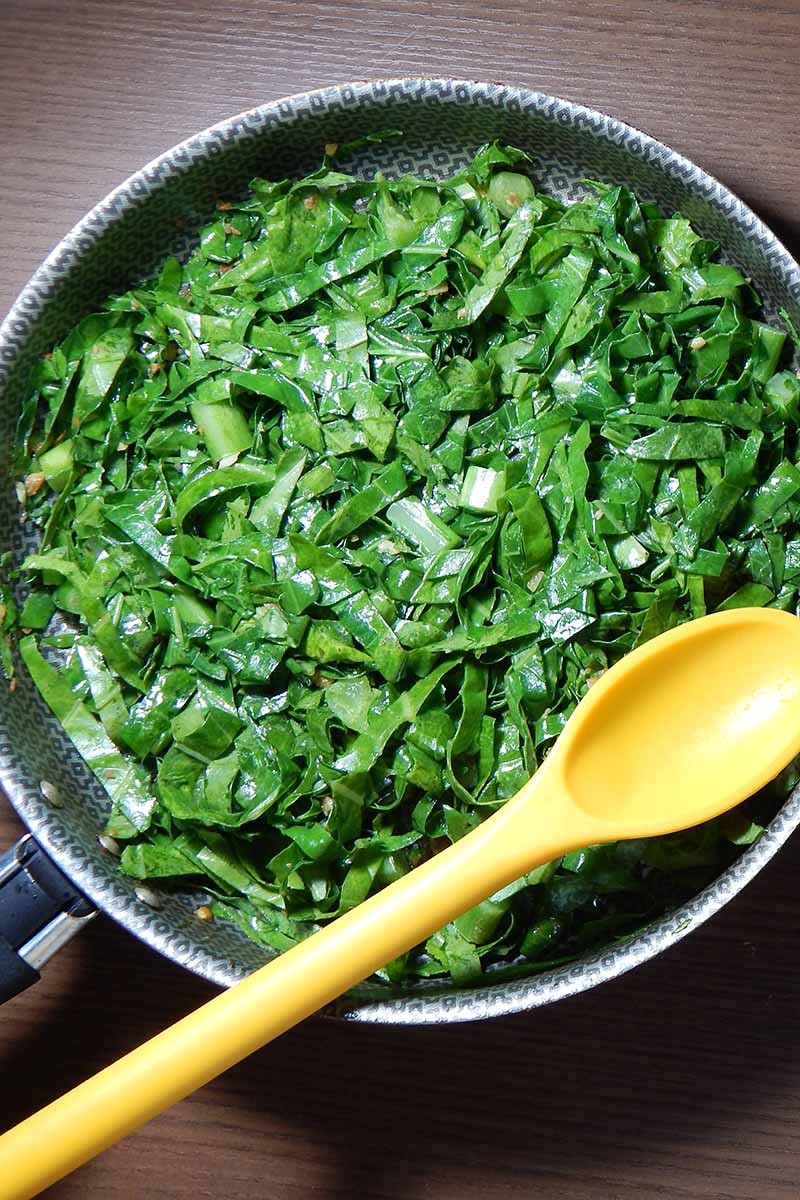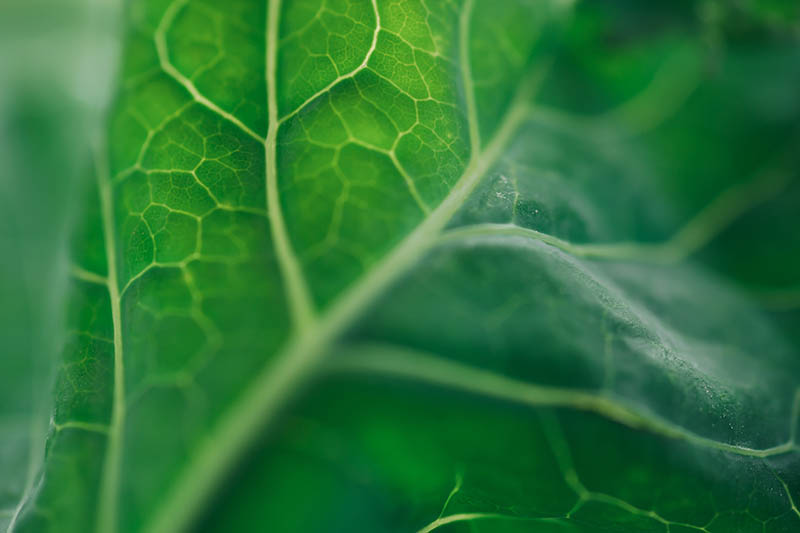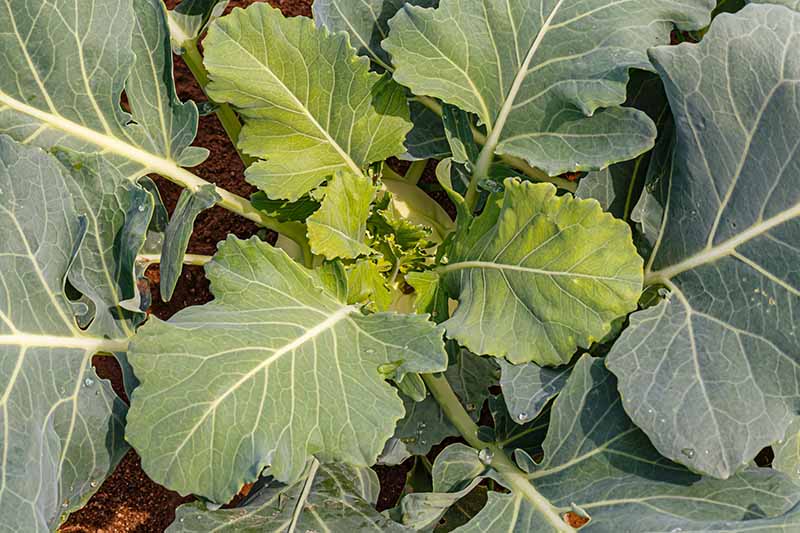In addition to its deliciously crisp bulbs, the plant produces large edible leaves that can be picked and prepared in a fashion similar to what you might like to do with kale or collards. The flavorful greens are tasty sauteed, steamed, or even eaten raw in salads. We link to vendors to help you find relevant products. If you buy from one of our links, we may earn a commission. Kohlrabi is generally grown for its large fleshy bulbs, which grow above ground out of a central stalk. They are pleasantly crunchy, with a flavor somewhere between that of broccoli and cabbage. If you want to learn more about storing and preparing kohlrabi bulbs, our sister site, Foodal has a useful guide. But the bulbs aren’t the only yummy part of this subtly beautiful plant. The greens, which resemble collards in texture and flavor, can be harvested and prepared in similar ways.
Quick and Easy Harvesting
A quick-growing plant, you can begin harvesting the young foliage whenever the leaves reach a desirable size and you notice the bulbs just beginning to develop. Depending on the growing conditions, this should be somewhere around six week from planting. The leaves are especially flavorful in cool weather, so harvesting in spring or fall is ideal. It is also preferable to pick them when they are young, as the foliage toughens up a bit with age. To harvest, cut healthy outer leaves as you need them, being sure not to remove more than a third of the plant at a time. If you plan to harvest the bulbs later on – which you definitely should! – it is important to leave enough leaves attached to continue photosynthesis. Harvesting too many from a single plant can stunt the growth of the bulb. If you do eventually pick the whole plant to harvest the bulb, don’t toss the remaining greens! Though they will be a bit tougher at this point, they are still edible and tasty when thoroughly cooked. Once you become a kohlrabi convert, you will probably want to keep some in the garden as long as possible! Luckily, this fast grower is a great candidate for succession planting. Kohlrabi is quite easy to grow in the home garden, and you can start some new ones every couple of weeks for a continual harvest all season. Check out our complete kohlrabi growing guide to learn more.
Storage Suggestions
These greens are best eaten fresh, so I like to pick them just before dinner. But if you need to store them for a bit longer, they can be kept in the fridge for three or four days. Place the unwashed leaves in a perforated bag and set it in the crisper drawer. If they are still attached to the bulb, remove the greens and store them separately. Wash them just before you are ready to use them. If you have an abundance, the greens can also be frozen for longer storage. After washing thoroughly, remove the ribs and discard them. Chop the leaves to the desired size, and submerge them in boiling water. After five minutes of blanching, quickly drain and run the greens under very cold water or plunge them in an ice bath to stop the cooking process. Once they are completely cool, squeeze out the excess water and place the blanched greens into freezer bags. Since the leaves will freeze in a solid mass, consider using smaller bags for freezing individual portions. If you prefer to avoid all that plastic, one idea is to freeze individual portions in muffin tins. Just pack down the leaves a bit in each cup, and set the pan in the freezer. Once they are frozen solid, remove the pan from the freezer and warm the cups slightly with your hand or by running warm water over the bottom for a few seconds. The frozen greens should pop right out. At this point, you can refreeze them all in a single freezer bag for easy portioning. They should keep for up to a year. When you are ready to use them, just pop the whole chunk right into the frying pan or stew pot – there’s no need to defrost first.
Cooking Tips
Preparation methods are similar to what you would do with other types of leafy greens. However you like to enjoy kale or collards, you can prepare kohlrabi greens that way as well! Prior to cooking, remove the center ribs from each leaf and discard them. Wash thoroughly, then chop and prepare as desired. They are delicious wilted in a stir fry, sauteed as a side, tossed in a soup, or chopped up raw in a salad. Substitute kohlrabi greens in this recipe for deliciously garlicky creamed collards from our sister site, Foodal. This rich and heavenly side dish is super easy to prepare, and would make a perfect introduction to eating kohlrabi greens. The smaller young leaves are more tender and better for raw use in salads or on a sandwich, whereas the thicker, tougher ones are best cooked. I actually like to use the older thicker leaves as the outside of a wrap, since they are sturdy enough to hold the filling well. Foodal has a recipe for crunchy collard wraps with a creamy, slightly spicy quinoa and cashew cream filling, with plenty of tasty and nutritious vegetables as well. Just sub out the collard greens for those larger, tougher kohlrabi leaves, and enjoy! What are your favorite ways to prepare kohlrabi greens? Share your suggestions in the comments below. And for more information about kohlrabi, add these guides to your reading list next:
11 of the Best Kohlrabi Varieties to Grow Your Own9 of the Best Companion Plants for KohlrabiHealth Benefits of KohlrabiHow to Plant Kohlrabi Seeds

